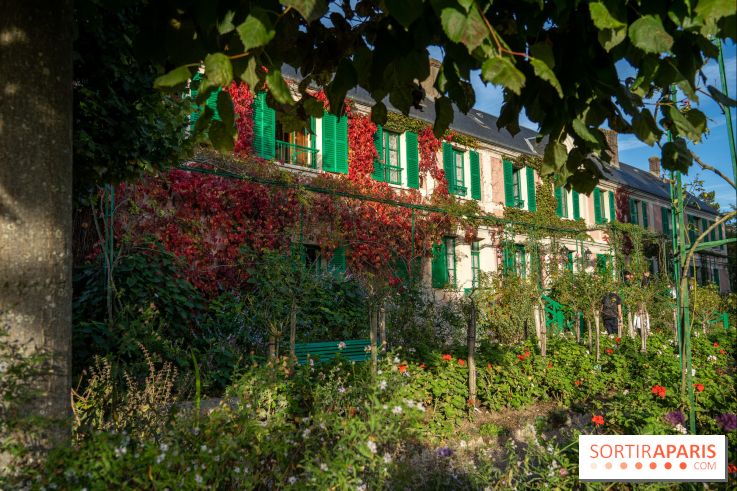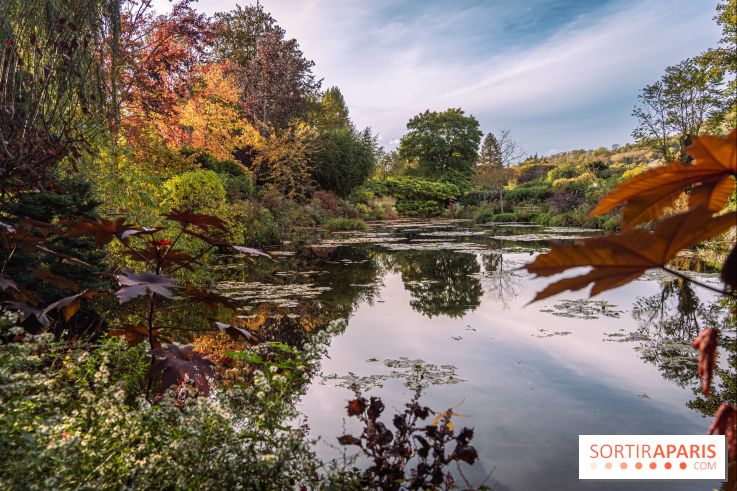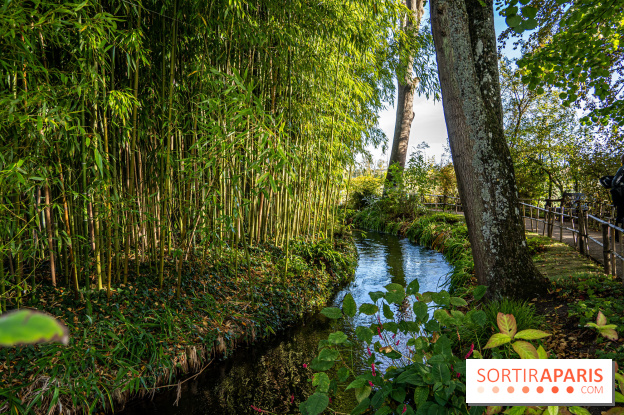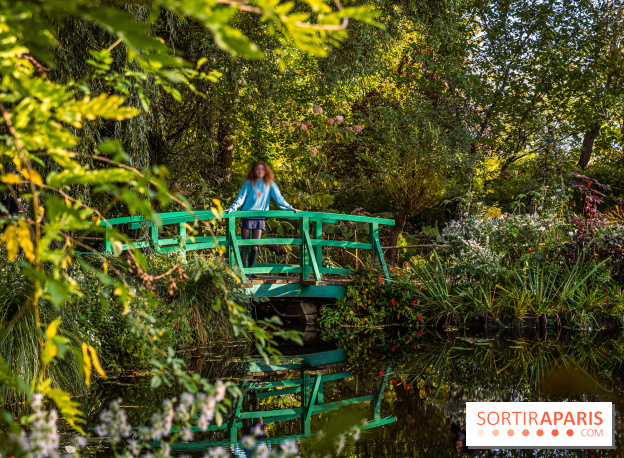Claude Monet is in the spotlight more than ever this year. With a Monet-Mitchell exhibition at the Fondation Louis Vuitton and the opening of Monet's new Impressionist house in Argenteuil, there's plenty more to come.
We take advantage of the mild weather to visit Claude Monet's famous house in Giverny, whose gardens were such an inspiration to the artist. From spring through to autumn, and especially on public holidays, we take advantage of the season to go green.
When autumn comes, you'd be forgiven for thinking that gardens are less beautiful to visit at this time of year, but you'd be wrong. In fact, there's no shortage of flowers, whatever the season, and the lovely hues of autumn trees and leaves bring incomparable beauty to the historic site. In spring, it's the beauty of the wisteria on the bridge that catches our eye.
The gardens of Claude Monet's house are divided into two parts: on one side, the Clos Normand, the flower garden facing the house and overlooked from the house, and on the other side of the underpass, the Japanese-inspired Water Garden, where water lilies and bridges are revealed.
The approximately one-hectare Clos Normand is made up of beautiful perspective paths. Symmetry and color await you. At this time of year, amaranths, asters, nasturtiums, chrysanthemums, dahlias, snapdragons, roses, geraniums, lavenders, clematis and other colchicums, sunflowers and cosmos make up the decor of these lush alleys.
The house, which we warmly recommend you visit to immerse yourself in the painter's world and his inspiration, is adorned in pretty red hues with the vine winding along the façade, providing a lovely contrast with the famous green hue so dear to Monet.
We then move on to the Jardin d'Eau, the garden that was the source of most of Monet's inspiration in his final years. It was in 1893, 10 years after his arrival in Giverny, that Monet bought the land next to his property, on the other side of the railway line. It is crossed by a small stream, the Ru, a derivation of the Epte. Here, he dug his first basins and planted them with plants that were, for the time, exotic to say the least.
In a letter to the prefect at the time, following complaints from local residents who feared poisoning of the waterways, he stated:"This is only a matter of pleasure and for the pleasure of the eyes, and also for the purpose of a painting motif; in this basin I only grow plants such as water lilies, reeds, irises of different varieties, which generally grow spontaneously along our river, and there can be no question of poisoning the water."
He then had a Japanese bridge built which, contrary to tradition, is distinguished by its famous green color. In this garden, oriental inspiration is evident in the choice of plants: bamboos, gingkos biloba, maples, Japanese peonies, lilies and weeping willows form the decor around the water feature, where water lilies and reeds proliferate.
It was in 1897 that he began painting the water lilies, inspired by the site's changing colors at different times of the day and year. The result today is one of his greatest masterpieces, which can be admired at the Musée de l'Orangerie in Paris and at the Fondation Vuitton.
This garden, as beautiful in spring as it is in summer and autumn , with its colorful maples and water lilies, never ceases to enchant. Don't forget to book your tickets. Online booking is not compulsory, but is recommended at weekends and on public holidays. Note that this garden was voted 2nd most beautiful flowered panorama in the world by the Torres del Paine National Park.
Dates and Opening Time
From March 29, 2024 to November 1, 2024
Location
House and gardens of Claude Monet-Giverny
84 Rue Claude Monet
27620 Giverny
Prices
Moins de 7 ans : Free
Handicapé PMR: €5.5
7-17 ans et étudiants: €6.5
Billet adulte: €11
Recommended age
For all
Official website
fondation-monet.com



































































